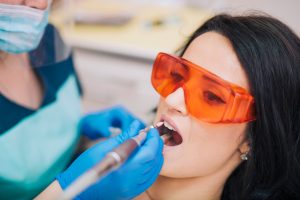Many children are often scared of dental appointments to the extent that it becomes impossible to perform necessary dental procedures on them. Dentistry for children has developed sedation procedures for children who are safe to administer. These sedation techniques will help calm your child and allow the dentist to perform dental procedures.
Table of Contents
Understanding Sedation Dentistry
Sedation dentistry specializes in giving patients help from trauma and stress of dental procedures. Contingent upon your child’s circumstance, you and their pediatric dentist may settle on any of the three sedation strategies which are laughing gas, oral sedation, and IV sedation. Every one of the three strategies includes their place inside sedation dentistry. Ultimately, your child’s medicinal history will decide the correct option.
Nitrous Oxide – Laughing Gas
Nitrous Oxide is used for patients of any age since your child will remain awake. This is very helpful if the child is extremely apprehensive of dental procedures. After administering the laughing gas, the child is asked to sit back and relax. Deep breathing slowly will allow the effects of laughing gas to kick in.
Laughing gas wears off quickly. The child stays awake the entire time and there is absolutely no cause for concern. As soon as the mask is removed, the child will come back to normal with a few minutes and resume a normal schedule like school and play.
Oral Sedation for Invasive Dental Procedures
In case a more invasive dental procedure has to be performed on your child, the doctor may recommend oral sedation. In oral sedation, the child becomes unconscious and the procedure can be performed smoothly on their tooth. However, oral sedation is very much under the control of the dentist. The dentist can wake up the child in case any cooperation is required from his or her end.
Oral sedation required extra care. The dentist may ask to keep the child without food or water for a few hours before the sedation. Due to this, many dentists schedule such appointments in the morning so the child does not have to miss meals or suffer unnecessarily.
Also, it will take a day or two for the child to return back to school or play. Since this medication makes the child feel drowsy, he will need to be monitored for the next few days to see any unusual activity. Once the medications wear off completely the child can go back to school.
IV Sedation
For IV sedation dentistry, an IV line is inserted into the vein in the child’s forearm. The IV line will give a consistent stream of the sedative that guarantees your child’s unconsciousness state for the whole operation. Sedation dentistry can enable your child to feel protected and safe while in the dentist’s office, without the trauma and agony. Dentists intently screen and monitor your child and ensure they have an oxygen mask on.
Sedation in dentistry for children has become increasingly common. With experienced dentists and staff, these procedures are performed smoothly, and the child comes out with healthier teeth.



